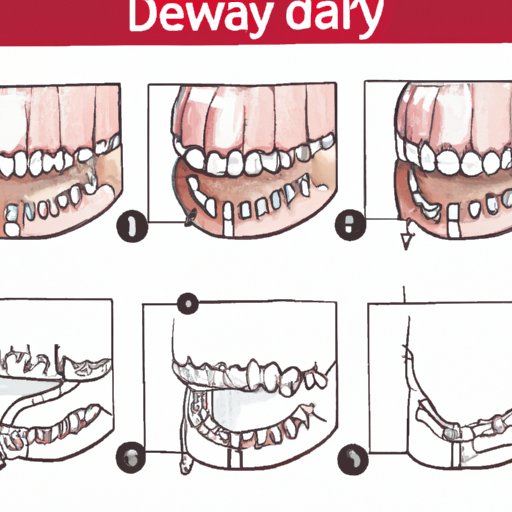
How to Draw Teeth: A Comprehensive Guide for Beginners
Drawing is an art that requires continuous practice and patience. However, with the right techniques and guidance, anyone can master the art of drawing. Drawing teeth is one of the essential skills that artists must possess. In this article, we will provide a comprehensive guide on how to draw teeth, ranging from the simplest to the most complex techniques.
Step-by-Step Guide
Starting with the basics is always essential in drawing. When studying how to draw teeth, it is essential to begin with the simple and cartoonish types. This technique is suitable for beginners. Once you can draw cartoonish teeth with ease, you can progress to more complex and realistic teeth.
Simple, Cartoonish Teeth
For this technique, all that you need is a pencil, eraser, and paper. Start with the shape of the teeth, which is commonly similar to a rectangular shape. Draw simple lines on the tooth to identify the edges and give the tooth a more defined appearance. After creating your teeth’s primary shape, use small lines to add texture to make them more realistic.
Realistic Teeth with Shadows and Texture
Realistic teeth require a more detailed approach; starting with the basic structure of the tooth and adding more intricacies is essential. The first step is to create a rectangular shape as the base of the tooth. After that, you can add texture to the tooth using hatching and cross-hatching techniques. It is also necessary to add shadows to your drawing to give it a more three-dimensional appearance.
How to Draw Teeth with Braces, Missing Teeth, or Other Unique Features
Drawing teeth with unique features requires an extra set of skills. For example, braces have wires and brackets that must be drawn accurately. Missing teeth also require a different approach. Understanding the unique features of teeth is essential in drawing them.
Materials and Techniques
The essential materials for drawing teeth are a pencil, eraser, and paper. Shade the teeth using cross-hatching, hatching, or stippling to create a realistic appearance. The use of different textures is also essential in drawing realistic teeth.
Dental Anatomy
Understanding dental anatomy is crucial in drawing teeth. Teeth consist of the crown, root, enamel, dentin, and pulp, and all these parts affect the appearance of the tooth when drawing. Dental anatomy is the foundation of every accurate teeth drawing that every artist must learn.
Perspective
Creating a three-dimensional feel of teeth requires an understanding of different angles and perspectives. Every position requires a different level of application of skills. By learning the different perspectives, one can choose the most appropriate angle to depict their vision accurately.
Teeth Expressions
Understanding Teeth expressions helps artists convey emotions realistically. Subtle details like gaps, chips, and stains can significantly convey different emotions and personalities, and gender. Learning and incorporating these details into a drawing creates a more relatable and realistic appearance.
Realistic Rendering
Realistic rendering is the ability to make an object look as lifelike as possible. Creating teeth that look realistic also involves drawing shadows, highlights, and reflections accurately. Knowing how to create a realistic rendered look on teeth is both laborious and rewarding but it is worth it.
Common Mistakes
Mistakes are inevitable, even for professional artists. Some common errors that artists make when drawing teeth include an inaccurate number of teeth, inconsistent shading, incorrect perspective, among others. The best way to avoid mistakes is to practice, review and take note of errors mostly made.
Conclusion
In conclusion, understanding how to draw teeth is an essential skill for every artist. Starting with basic techniques and progressing to more complex ones, understanding dental anatomy, and learning about shading and texture techniques are crucial. Additionally, understanding perspectives, common mistakes, and teeth expressions are essential in creating realistic-looking teeth. Keep practicing and experimenting with your newfound skills to uncover the best that you can create.




